By Film Noir Blonde and Mike Wilmington
The Noir File is FNB’s guide to classic film noir, neo-noir and pre-noir on Turner Classic Movies (TCM). The times are Eastern Standard and (Pacific Standard). All films without a new review have been covered previously in Film Noir Blonde and can be searched in the FNB archives (at right).
PICK OF THE WEEK “Odds Against Tomorrow” (1959, Robert Wise). Monday, Aug. 31. 6 p.m. (3 p.m.).
Here is one of the great, underrated film noirs – a movie whose stature was recognized early on by French critics and has continued to grow over the past half century.
Directed by Robert Wise, with a Nelson Gidding-credited screenplay based on a novel by suspense and crime specialist William McGivern (“The Big Heat”), “Odds Against Tomorrow” boasts a riveting and exciting story, unforgettable characters and a bitingly contemporary social/political allegory plot.
In the movie, three mismatched New Yorkers – genial, corrupt ex-cop Dave (Ed Begley), brutal ex-con Earl (Robert Ryan) and reckless musician Johnny (Harry Belafonte), a nightclub entertainer with huge gambling debts – join forces for an upstate bank robbery, a well-planned heist that will supposedly solve all their money problems. But their problems are just beginning. Earl is a racist who hates Johnny on sight and Johnny has a short fuse as well. Dave has heart trouble. Things begin to unravel, then explode.
Ryan’s performance is a scorcher; he‘s a perfect villain, bad to the bone. Belafonte’s is compelling and non-clichéd. (He was also one of the producers.) Begley’s is jovial but poignant, a Willy Loman-like salesman peddling his own destruction. The women in the case, a pair of bad blondes – Shelley Winters as Earl’s whining wife and Gloria Grahame as his slutty neighbor – are top-notch noir babes.
French noir master Jean-Pierre Melville named “Odds Against Tomorrow” as one of his three all-time favorite movies; the other two were: “The Asphalt Jungle” and “The Best Years of Our Lives.” Along with the 1949 boxing classic “The Set-Up” (which had Ryan starring in a sympathetic role, as the aging fighter) this is the best of Wise’s noirs and crime movies.
The screenplay was mostly written by the uncredited and blacklisted Abraham Polonsky (“Force of Evil”). The original jazz score is by John Lewis and the Modern Jazz Quartet. The atmospheric black and white cinematography is by Joseph C. Brun (“Edge of the City”). The film is a great one, noir to the max, with a powerful and unforgettable ending.
Saturday, Aug. 29: George C. Scott Day
12 p.m. (9 a.m.): “Anatomy of Murder” (1959, Otto Preminger). One of the best and most true-to-life of all courtroom dramas, “Anatomy of a Murder” is also the best film producer-director Otto Preminger ever made.
8 p.m. (5 p.m.): “The Hustler” (1961, Robert Rossen). In this dark, agile, sinewy cinema tale of the world of pool halls, pool hustlers and the gamblers who exploit them, Paul Newman plays the brash, cocky young pool shark Fast Eddie Felson. Piper Laurie is his ill-fated girl (a tragic drinker). Myron McCormick is his rat-faced, loyal little manager, Jackie Gleason is Minnesota Fats, the plump, limber champ whom Fast Eddie wants to replace. And George C. Scott is Burt, the mean manipulator with the satanic smile who lays the bets, bankrolls the players and says of Fast Eddie to Fats: “Stick with this kid. He’s a loser.”
Newman wasn’t a loser here and neither was the movie. Based on Walter Tevis’s cool, hustling, sharply authentic novel, it’s one of the great late film noirs and the show that made Newman a mega-star – and made Gleason a movie star as well. No film has ever caught the seedy but graceful pool-hall underworld better: the angles, the pockets, the incredible shots, the immaculate tables, the cigarettes and booze culture, the click of the pool balls, and the bravura of the hustlers and sharks hard at their game. Once you see this picture, you won’t get them out of your head either.
2:15 a.m. (11:15 p.m.): “The Last Run” (1971, Richard Fleischer). One last job for aging crook driver George C. Scott. Co-starring wives Trish Van Devere and Colleen Dewhurst; scripted by Alan Sharp; with a few scenes (uncredited) directed by John Huston.
Monday, Aug. 31: Shelley Winters Day
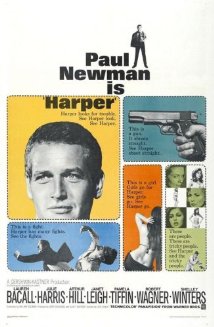 6 a.m. (3 a.m.): “Harper” (1966, Jack Smight). Paul Newman, at his most attractively laid-back, plays one of detective literature’s most celebrated private eyes, novelist Ross Macdonald’s Lew Archer. One catch: Archer has been renamed “Lew Harper,” so Newman could have (he hoped) another hit movie with an “H” title, like “The Hustler” and “Hud.” He got one. The stellar cast includes Lauren Bacall, Janet Leigh, Julie Harris, Shelley Winters, Robert Wagner, Arthur Hill, Robert Webber and Strother Martin. Scripted snappily by William Goldman.
6 a.m. (3 a.m.): “Harper” (1966, Jack Smight). Paul Newman, at his most attractively laid-back, plays one of detective literature’s most celebrated private eyes, novelist Ross Macdonald’s Lew Archer. One catch: Archer has been renamed “Lew Harper,” so Newman could have (he hoped) another hit movie with an “H” title, like “The Hustler” and “Hud.” He got one. The stellar cast includes Lauren Bacall, Janet Leigh, Julie Harris, Shelley Winters, Robert Wagner, Arthur Hill, Robert Webber and Strother Martin. Scripted snappily by William Goldman.
2:30 p.m. (11:30 a.m.): “He Ran All the Way” (1951, John Berry). John Garfield, as a sexy bad guy on the lam, terrorizes a family and tries to seduce Shelley Winters. (Tries?) Hard core noir and Garfield’s last movie. With Norman Lloyd and Wallace Ford.
4 p.m. (1 p.m.): “I Died a Thousand Times” (1955, Stuart Heisler). A color and Cinemascope remake of the Raoul Walsh–Humphrey Bogart–Ida Lupino gangster saga (from a W. R. Burnett novel) “High Sierra,” this time around starring Jack Palance and Shelley Winters. Inferior to its model, but not awful. With young supporting heavy Lee Marvin in his vicious snarl mode.
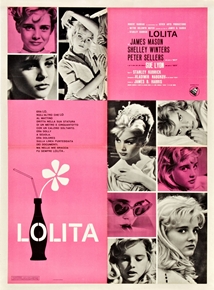 10 p.m. (7 p.m.): “Lolita” (1962, Stanley Kubrick). Kubrick’s superb film of Vladimir Nabokov’s classic comic-erotic novel – about the dangerous affair of college professor Humbert Humbert (James Mason) and nymphet Lolita (Sue Lyon), in which they are nightmarishly pursued by the writer, sybarite and man of many faces Clare Quilty (Peter Sellers). An underrated dark comic masterpiece, this film has strong noir touches, themes and style. With Shelley Winters; script by Nabokov (and Kubrick).
10 p.m. (7 p.m.): “Lolita” (1962, Stanley Kubrick). Kubrick’s superb film of Vladimir Nabokov’s classic comic-erotic novel – about the dangerous affair of college professor Humbert Humbert (James Mason) and nymphet Lolita (Sue Lyon), in which they are nightmarishly pursued by the writer, sybarite and man of many faces Clare Quilty (Peter Sellers). An underrated dark comic masterpiece, this film has strong noir touches, themes and style. With Shelley Winters; script by Nabokov (and Kubrick).
Wednesday, Sept. 2
1 p.m. (10 a.m.): “A Woman’s Face” (1941, George Cukor). Based on a Gustaf Molander-directed Swedish romantic thriller about a horribly scarred lady outlaw, whose personality changes (for the better), when plastic surgery gives her a beautiful new face, this MGM remake has Joan Crawford in the star role originated by the young Ingrid Bergman. It’s about as posh as a noir can get.
Thursday, Sept. 3
12:30 p.m. (9:30 a.m.): “The Hitch-Hiker” (1953, Ida Lupino). Fate isn’t smiling when two guys on vacation give a lift to a man who turns out to be serial killer. “The Hitch-Hiker,” starring Edmond O’Brien, Frank Lovejoy and William Talman, is the only classic film noir directed by a woman, the great Ida Lupino. Best known as an actress, Lupino was also a director, writer and producer. She co-wrote “The Hitch-Hiker.”
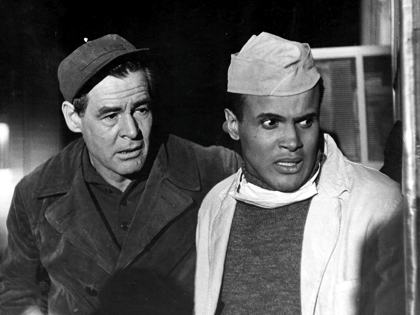
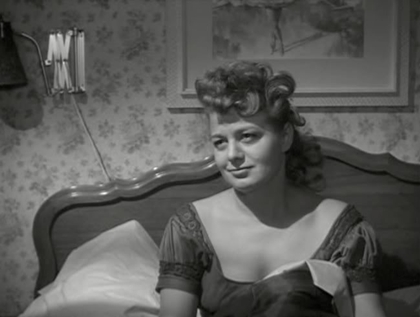
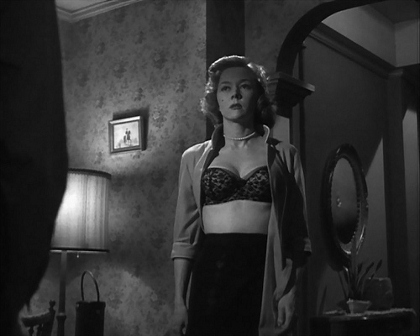
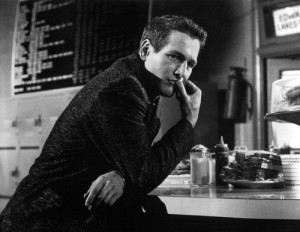






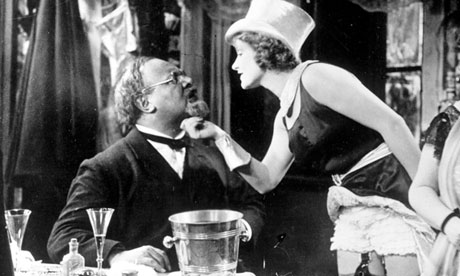

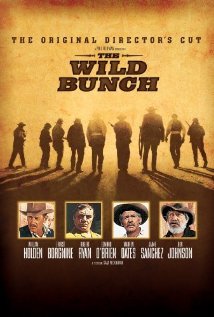
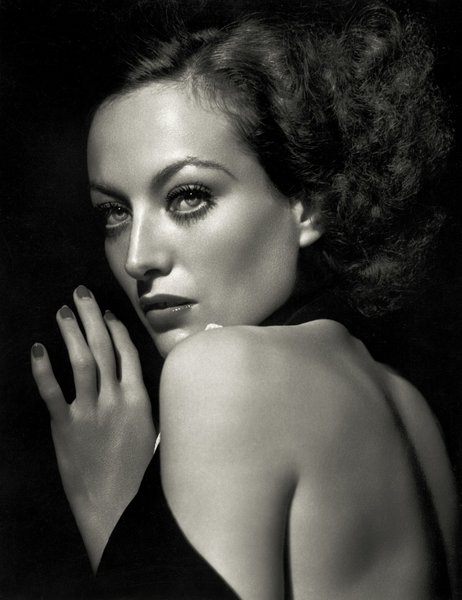
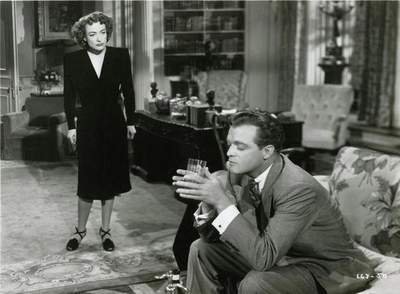





From FNB readers